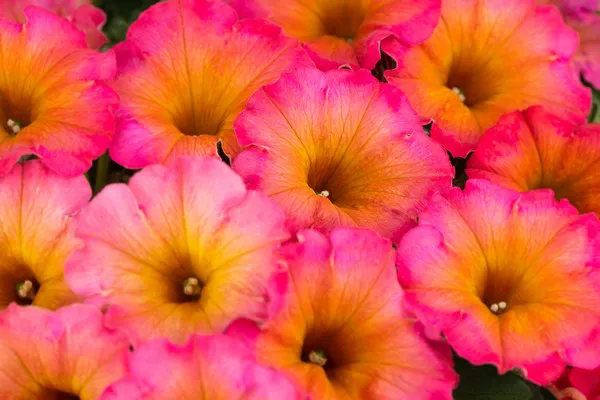Hummingbirds, with their iridescent plumage and rapid wingbeats, are among the most captivating creatures in the avian world. In Illinois, these tiny marvels grace our landscapes with their presence, adding a touch of magic to our gardens. While Illinois may not be renowned for its hummingbird diversity compared to other regions, it is nonetheless home to several species that enchant enthusiasts and casual observers alike.
Among the hummingbirds commonly spotted in Illinois are the Ruby-throated Hummingbird (Archilochus colubris) and the occasional Rufous Hummingbird (Selasphorus rufus). These vibrant birds are known for their preference for woodland edges, gardens, and areas with abundant nectar sources. Providing suitable flowers is essential to attracting and supporting these delightful visitors.
Characteristics of Attractive Flowers
Understanding what makes flowers irresistible to hummingbirds is crucial for creating a garden that appeals to these tiny birds. Several key characteristics make certain flowers particularly attractive to hummingbirds:
Abundant Nectar: Hummingbirds have high metabolic rates and require a substantial amount of energy to fuel their constant activity. Flowers rich in nectar provide the necessary sustenance, making them irresistible to hummingbirds.
Tubular Shape: The unique anatomy of hummingbirds, with their long, specialized bills and extendable, forked tongues, allows them to access nectar deep within tubular flowers. Flowers with elongated, trumpet-like shapes are well-suited to their feeding behavior.
Bright Colors: While hummingbirds are not solely attracted to red flowers, they do have a strong affinity for vibrant hues, particularly red and orange. These colors stand out against the green foliage and are easily visible to hummingbirds, guiding them to potential food sources.
List of Flowers
For Illinois gardeners eager to welcome hummingbirds into their outdoor spaces, a diverse array of flowers offers both beauty and utility. Below is a curated selection of flowers known to attract hummingbirds in Illinois, along with essential details for each:
1. Trumpet Vine (Campsis radicans)
- Description: A vigorous woody vine with clusters of trumpet-shaped orange-red flowers.
- Bloom Time: Late spring to early fall.
- Care Instructions: Plant in full sun with well-drained soil. Prune regularly to control growth.
2. Cardinal Flower (Lobelia cardinalis)
- Description: A native perennial with striking scarlet-red flowers on tall spikes.
- Bloom Time: Mid- to late summer.
- Care Instructions: Prefers partial shade and moist, acidic soil. Provide regular water.
3. Bee Balm (Monarda spp.)
- Description: Showy clusters of tubular flowers in shades of red, pink, or purple atop sturdy stems.
- Bloom Time: Summer to early fall.
- Care Instructions: Plant in full sun to partial shade. Divide clumps every few years to maintain vigor.
4. Red Hot Poker (Kniphofia uvaria)
- Description: Torch-like spikes of tubular flowers in fiery shades of red, orange, and yellow.
- Bloom Time: Late spring to midsummer.
- Care Instructions: Requires full sun and well-drained soil. Provide ample water during dry spells.
5. Scarlet Sage (Salvia coccinea)
- Description: Delicate spikes of bright red flowers beloved by hummingbirds and butterflies.
- Bloom Time: Summer to fall.
- Care Instructions: Plant in full sun with average, well-drained soil. Deadhead spent blooms for prolonged flowering.
6. Columbine (Aquilegia canadensis)
- Description: Graceful nodding flowers with distinctive red and yellow petals.
- Bloom Time: Spring to early summer.
- Care Instructions: Prefers partial shade and moist, fertile soil. Mulch to retain soil moisture.
Planting and Care Tips
Successfully cultivating a hummingbird-friendly garden in Illinois requires careful attention to planting and maintenance practices tailored to the region’s climate and soil conditions. Consider the following tips:
1. Choose Native Plants: Native flowers are well-adapted to Illinois’ climate and soil types, making them resilient and attractive to local wildlife, including hummingbirds.
2. Provide a Variety of Blooms: Select flowers with staggered bloom times to ensure a continuous supply of nectar throughout the growing season, sustaining hummingbirds as they migrate through or reside in Illinois.
3. Ensure Proper Placement: Plant flowers in locations that receive adequate sunlight and offer protection from strong winds. Grouping flowers together in clusters can create focal points that are more appealing to hummingbirds.
4. Water Wisely: Keep soil consistently moist, especially during hot, dry periods, to support healthy flower growth and nectar production. Mulching can help retain soil moisture and suppress weeds.
5. Avoid Pesticides: Minimize or eliminate the use of chemical pesticides and herbicides, as they can harm hummingbirds directly or indirectly by reducing their food sources.
Designing a Hummingbird Garden
Designing a garden specifically tailored to attract hummingbirds requires thoughtful planning and consideration of both aesthetic and functional elements. Here are some design tips to create a hummingbird haven in your Illinois landscape:
1. Create Height Variation: Incorporate flowers of varying heights to add visual interest and provide perching spots for hummingbirds to rest and observe their surroundings.
2. Include Shelter and Water: Integrate shrubs, trees, and other vegetation to offer shelter from predators and inclement weather. Installing a shallow birdbath or fountain can also provide drinking and bathing opportunities for hummingbirds.
3. Use Color Strategically: While red is a favorite among hummingbirds, complement it with a diverse palette of colors to attract a wider range of pollinators and enhance the garden’s overall beauty.
4. Plant in Clusters: Grouping similar flowers together in clusters or drifts can create impactful displays that are more visible and enticing to hummingbirds than scattered plantings.
5. Embrace Naturalistic Design: Aim for a relaxed, naturalistic design that mimics the wild habitats hummingbirds frequent, incorporating elements like meandering paths, native grasses, and layered plantings.
Conclusion
By incorporating these elements into your garden design and selecting the right flowers, you can create an inviting sanctuary that not only delights the senses but also supports the vital role hummingbirds play in our ecosystem. With careful planning and attention to detail, you can transform your outdoor space into a haven for these enchanting aerial acrobats, bringing joy and wonder to all who visit.


